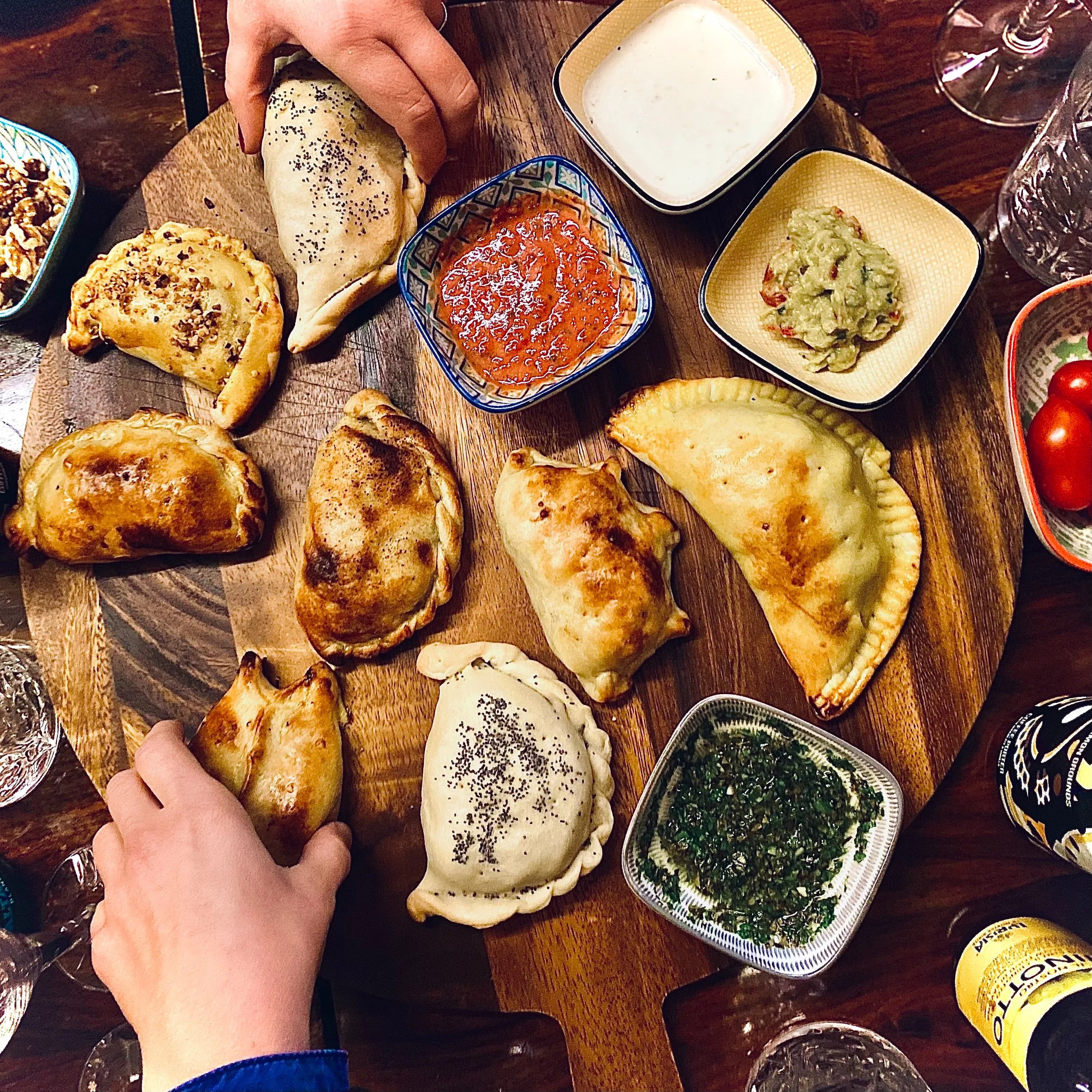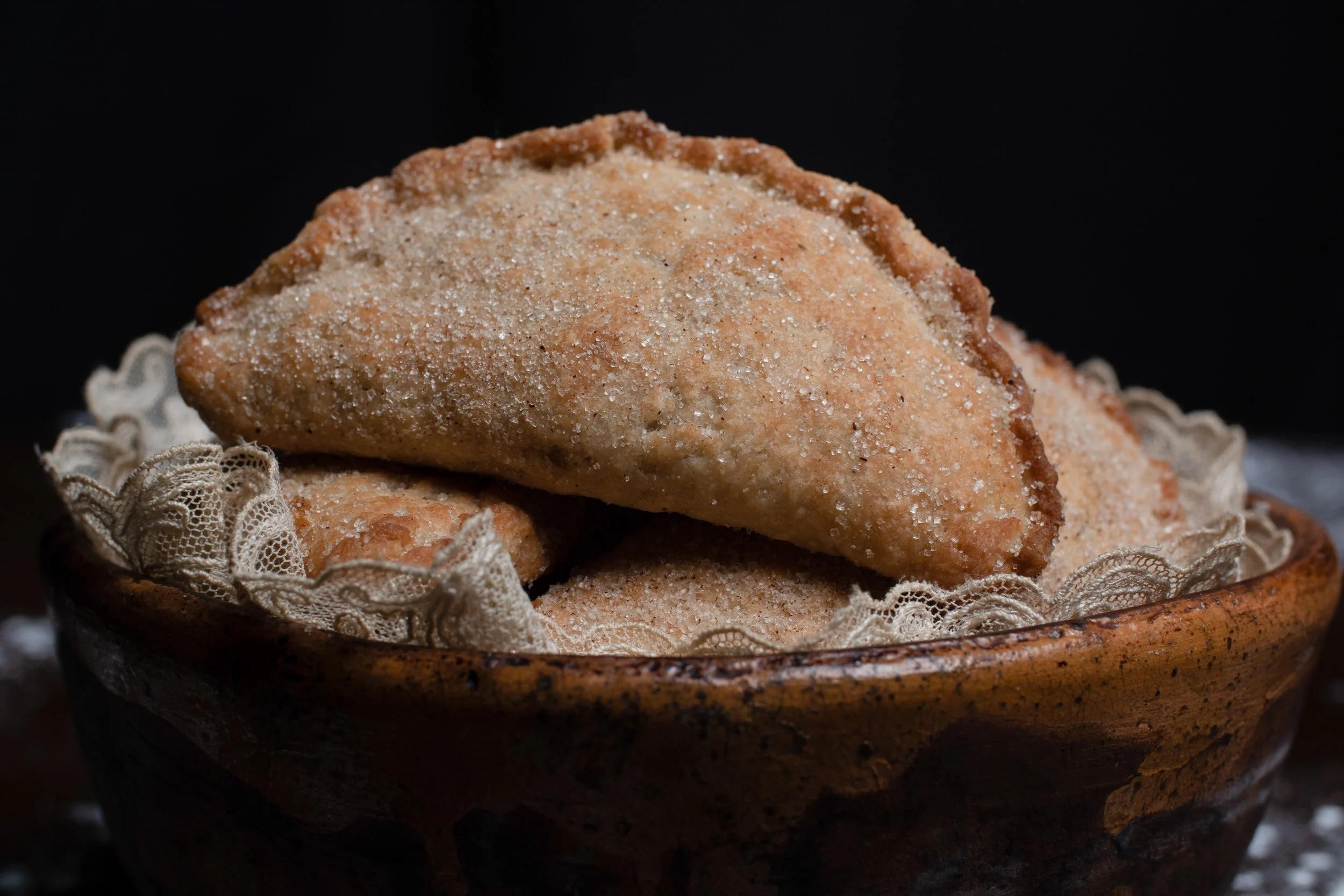Pocket of Gold
Say it with me: empanadas. Em-pa-na-das. No hidden accents or vowels, very straightforward.
And yet very easy to customize – or screw up, depending on you and your dinner guests’ tastes.
While the empanada did not originate in Argentina (that honor belongs to Spanish Galicia, as early as the 1520s), the empanada has nonetheless been a longtime staple of the country’s cuisine, often served during celebrations as a starter or main course. Preparation is fairly simple: a filling consisting of meat, cheese, vegetables, or additional ingredients is folded into a circle of dough and closed by kneading the seam, creating a pocket (The word empanar, from which empanada is derived, means “to [coat with] bread”). These pockets are then baked or fried to a golden crisp, and served hot. Similar pastries can be found all over the world, such as the South Asian samosa or the Italian calzone.
Spanish empanadas.
Variations on empanadas’ fillings and preparation exist throughout the country. In Buenos Aires, the Creole empanada is extremely popular, containing savory meat, red pepper, onion, and hard boiled egg. In fact, its essence is such that the Argentine Ministry of Culture declared it a Cultural Heritage of Food and Gastronomy. In other provinces such as Cordoba, it is traditional to sprinkle the ridged seam of the empanadas with powdered sugar, a holdout from when wine-boiled pears with cloves were a widely popular part of the filling. Even more variations arise from the different types of repulgue, or the pinching method used in closing the pastries’ seams (the word repulgue has its roots in the word pulgar, for thumb).
Empanadas dusted with sugar.
Much fuss tends to be made over the inclusion of raisins in the filling of one’s empanadas, possibly analogous to the constant raging debate over pineapple on pizza. While some enjoy the combination of sweet and savory flavors, others curse the dried fruit’s inclusion and consider it an affront to their palate, morality, and the current state of Argentinean cuisine, in that order. However, more widely accepted than derision of ingredients is the knowledge that even “bad” empanadas are better than no empanadas at all.
Seafood empanadas.
Furthermore, if the above state of affairs dissatisfies, it is encouraged that due to the relative ease of making the dish, and the endless combinations of ingredients that taste good in an envelope of fried or baked dough, one could make their own damn empanadas and fill them with whatever they please.




